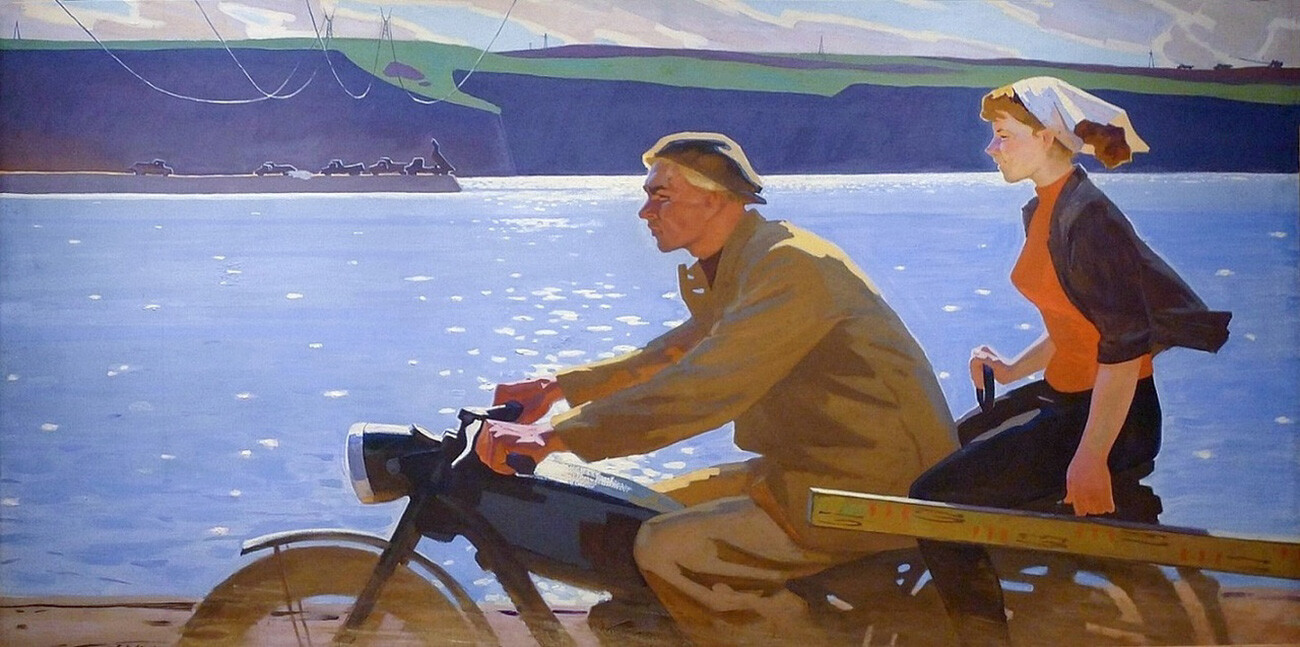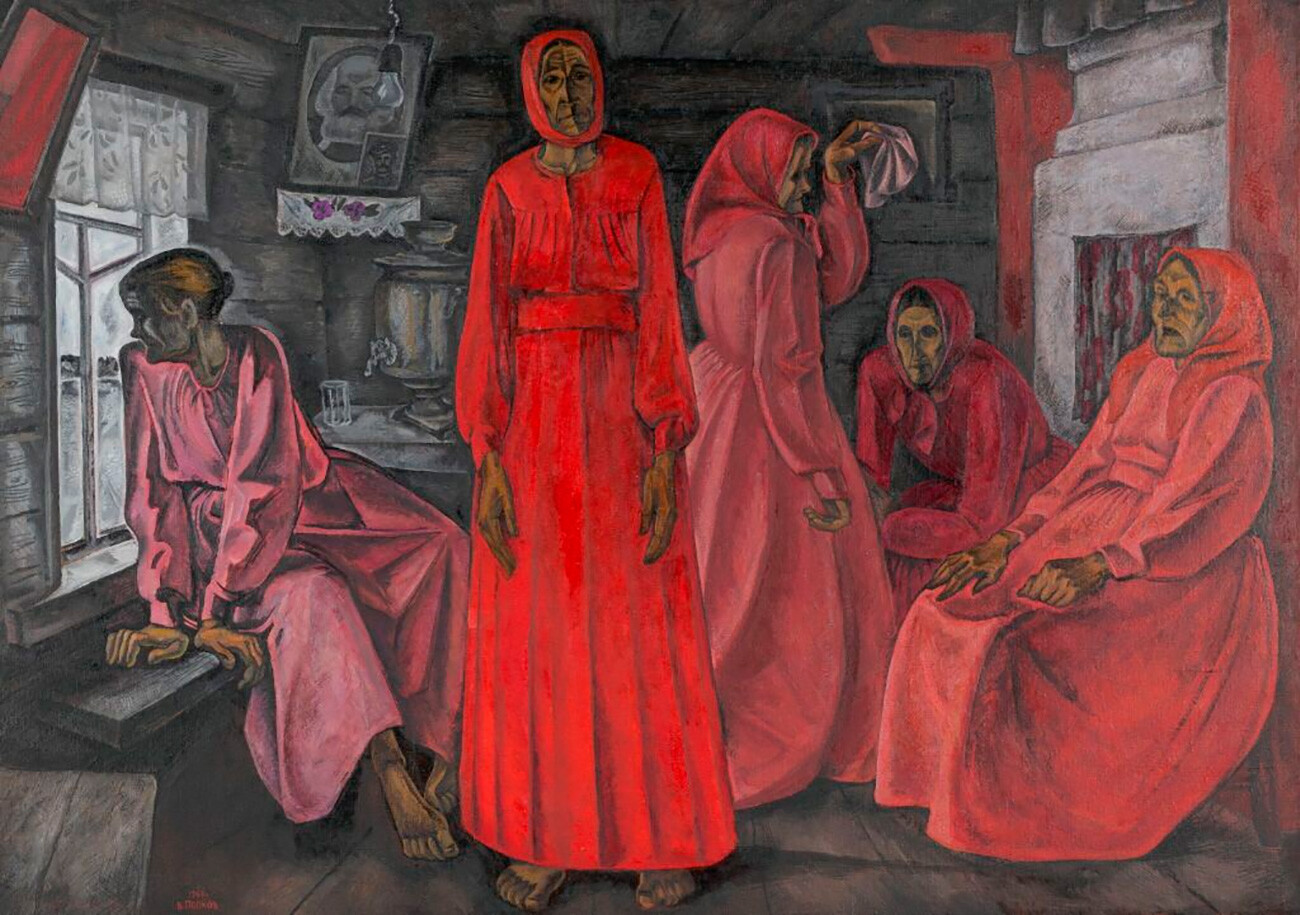
This is one of the first large-scale works by Viktor Popkov, who, at that point, had just recently graduated from the Surikov Art Institute. And probably his most famous painting. Art historians have dubbed it a standard of the Soviet ‘severe style’. The theme of the Bratskaya HPP construction occupied many artists and poets, but Popkov illuminated the workers in an unusual way, as they are not engaged in construction, but pose on purpose, each representing a different type.

A significant part of the artist's paintings were devoted to peasants. Additionally, one of the most important themes for the Soviet era was the development of virgin lands. And, again, Popkov depicts not the hard labor itself, but rest after. He creates a powerful symbolic image: the circular composition shows the community of the collective, while echoing iconography.

In the late 1950s, Popkov traveled a lot throughout Siberia and saw, with his own eyes, how the workers at large Soviet construction sites lived. Therefore, this painting is another story from their everyday life and a vivid example of socialist realism style. The painting is rather rare for Popkov's melancholic and sometimes tragic handwriting, which is bursting with light and positivity.

Popkov often turns to everyday life, even intimate themes. Despite the overall simplicity of the subject, the painting seemingly depicts a whole life. Popkov painted his sister's family, obviously after a quarrel. But, the scene and details are familiar and understandable to every Soviet family.

This painting is the quintessence of Popkov's interest in the domestic genre in art. It embodies the aesthetics of the ‘Thaw’ era in the USSR and, at the same time, it's an echo of European neorealism of the 1960s. In 1967, the work received an honorary diploma from the 5th Biennale de Paris Youth Exhibition in France, which raised new interest in the Soviet genre.

A very important theme of Popkov's gloomy paintings is war experiences. He did not paint battle scenes, but rather, his heroes are ordinary people left without close relatives.

This two-meter canvas is another of Popkov's reflections on loneliness. This painting was inspired by the longing that the artist saw in the Russian North with its lonely widows living out their lives in the countryside.

This is a self-portrait of the artist at his easel. The image of Popkov's mother can be seen in the elderly woman. The metaphorical work reflects on the artist's work, reflection of the past and aspiration for the future.

Among Popkov's works are many funeral scenes. The theme of loss, of a person's passing occupied the artist's attention a lot. He himself died at the age of just 42 and this large canvas stood near his coffin during the farewell at the House of Artist in Moscow.

This large-scale canvas is a dedication to Popkov's favorite poet and one of his last works. The image of Pushkin repeatedly resurfaced in his art and, a year before painting this, he visited Pushkin Hills and the Mikhailovskoe Estate, where the poet had spent his years of exile.
A large-scale exhibition has opened in the new building of the Tretyakov Gallery on Kadashyovskaya Embankment to commemorate the 50th anniversary of Viktor Popkov's tragic death. It will run until May 11, 2025.
If using any of Russia Beyond's content, partly or in full, always provide an active hyperlink to the original material.
Subscribe
to our newsletter!
Get the week's best stories straight to your inbox